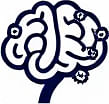Mental Models for Achieving Work-Life Balance
 by Max Miller
by Max Miller
Discover how mental models can help maintain work-life balance by prioritizing tasks, setting boundaries, and fostering mindfulness. This approach supports cognitive development and business efficiency, making it essential for professionals seeking harmony in their lives.

Work-life balance remains a key challenge for many, especially in demanding professional environments. It involves creating harmony between professional duties and personal well-being. One effective mental model is the Eisenhower Matrix, which helps in sorting tasks by urgency and importance.
In practice, this model divides activities into four categories. For instance, you might focus on tasks that are both urgent and important first. This approach allows individuals to allocate time more effectively, reducing overwhelm. Another useful concept is boundary setting, which defines clear limits between work and home life.
Boundary setting can involve simple routines, like ending work emails after a certain hour. By doing so, people protect their personal time, leading to better rest and rejuvenation. Mental models from psychology, such as cognitive reframing, offer additional support. Cognitive reframing encourages viewing stressors as temporary, which aids in maintaining equilibrium.
Benefits of Applying These Models
Adopting these strategies can lead to improved health outcomes. For example, regular use of the Eisenhower Matrix might decrease stress levels by clarifying priorities. In business contexts, this translates to higher productivity without burnout. Professionals often report greater satisfaction when they integrate such models into daily routines.
Lists can be helpful here. Consider the following steps for implementation:
- Identify key tasks each day using the Eisenhower Matrix.
- Establish routines that signal the end of the workday.
- Practice daily reflection to assess balance.
These steps build a foundation for long-term success. In terms of cognitive development, models like mindfulness play a crucial role. Mindfulness involves paying attention to the present moment, which can prevent work from spilling into personal time.
Challenges and Solutions
While these models are beneficial, obstacles can arise. For instance, unexpected demands at work might disrupt plans. In such cases, flexibility becomes important. Adjusting boundaries temporarily while maintaining core principles ensures sustainability. Business strategies often emphasize the role of team support in overcoming these issues.
From a psychology perspective, developing habits through repetition strengthens neural pathways. This means that consistent application of mental models leads to automatic responses over time. For lifelong learners, exploring these concepts can enhance overall decision-making skills.
Real-world examples illustrate their effectiveness. A manager might use cognitive reframing to view a tight deadline as an opportunity rather than a threat. This shift in perspective maintains balance and fosters resilience. In another scenario, prioritizing family time through boundary setting can improve relationships outside of work.
Integrating Models into Daily Life
To make these models practical, start with small changes. Begin by applying the Eisenhower Matrix to your weekly schedule. Over time, combine it with mindfulness exercises, such as short breaks for deep breathing. These practices not only support work-life balance but also contribute to personal growth.
In professional settings, sharing these models with colleagues can create a supportive culture. For example, teams that prioritize balance often see reduced turnover. Psychology research highlights how such environments boost creativity and innovation.
Ultimately, the value of these mental models lies in their adaptability. Whether in business strategies or personal development, they provide tools for sustained well-being. By focusing on these approaches, individuals can achieve a more fulfilling life.
Wrapping up, remember that balance is an ongoing process. Regular reflection and adjustment keep these models effective, ensuring they meet evolving needs.
